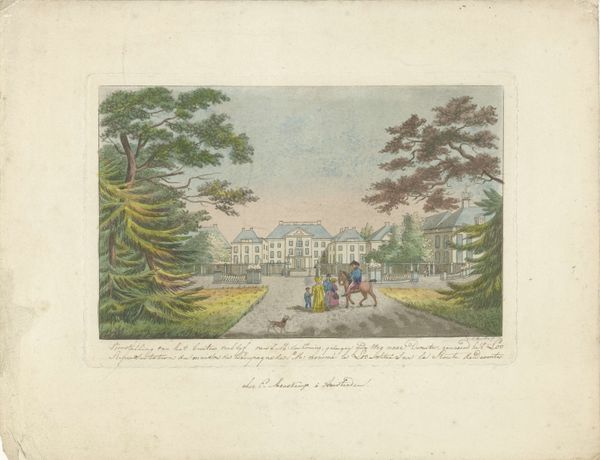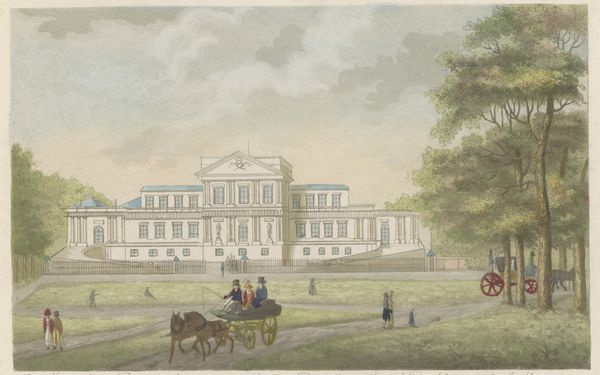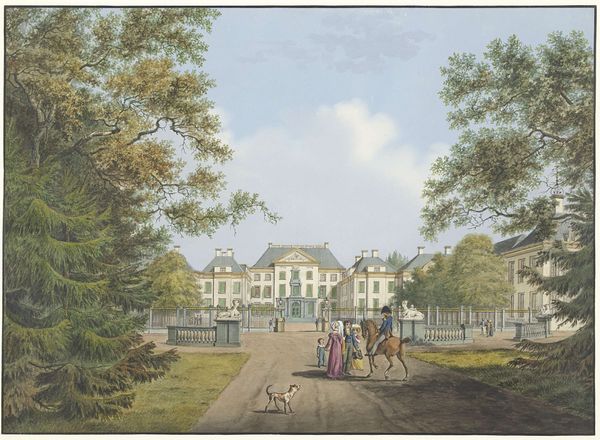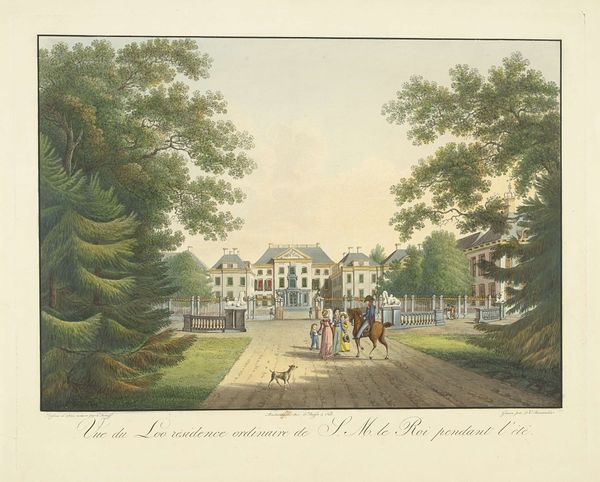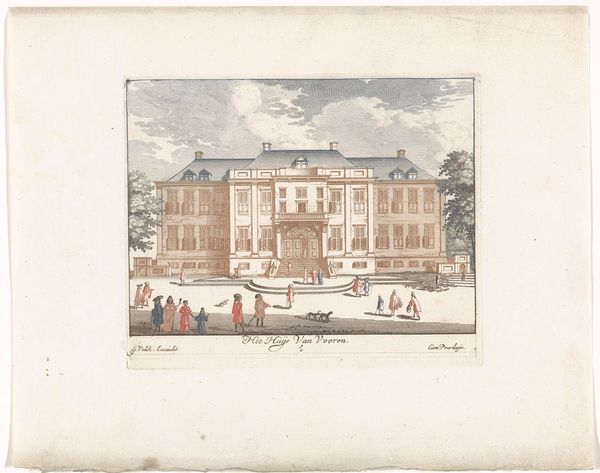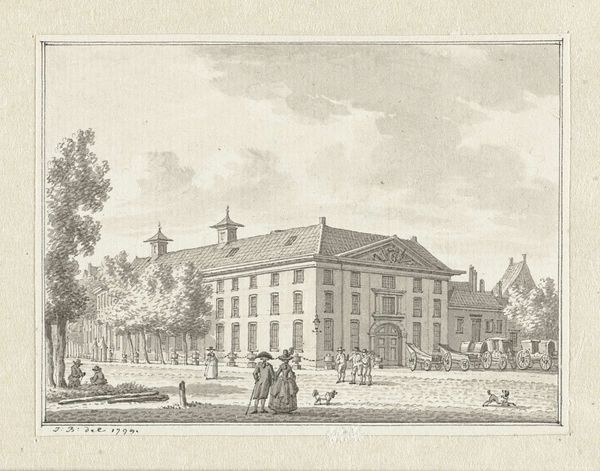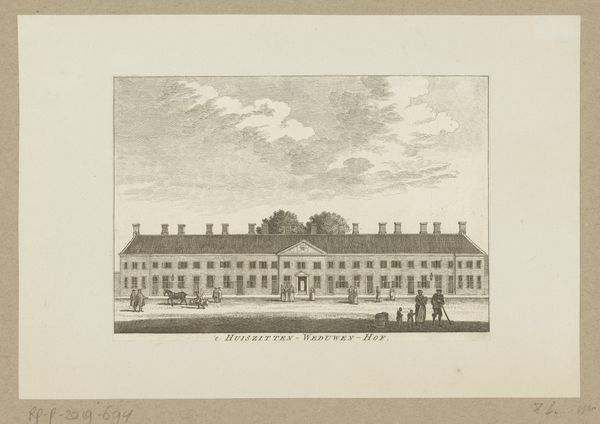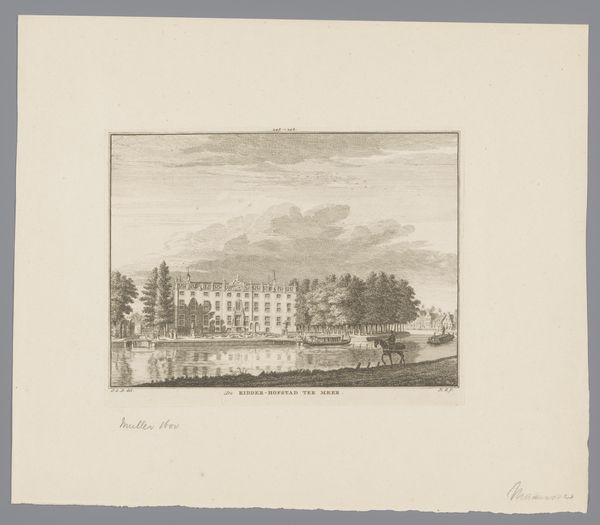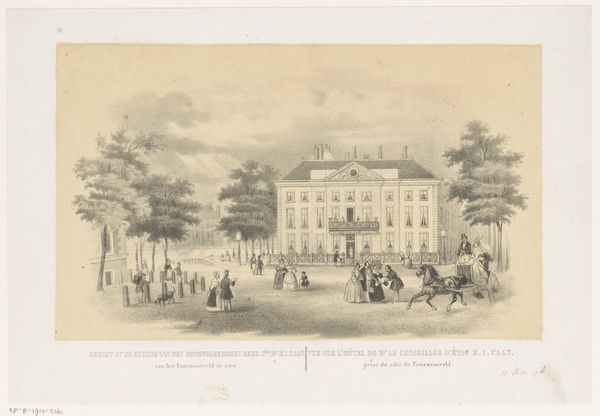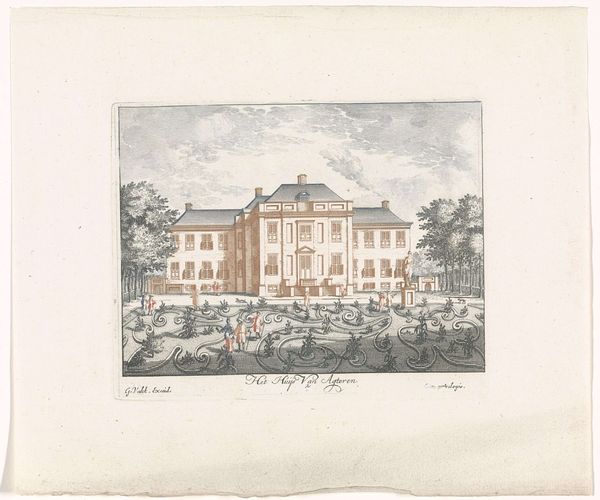
painting, watercolor
#
neoclacissism
#
painting
#
landscape
#
watercolor
#
romanticism
#
cityscape
#
watercolor
Dimensions: height 170 mm, width 246 mm
Copyright: Rijks Museum: Open Domain
Roelof van der Meulen painted ‘Paviljoen Welgelegen te Haarlem’ with watercolor. The pavilion, with its symmetrical design and neoclassical elements like the pediment and columns, embodies the Enlightenment ideals of order and reason. This architectural vocabulary echoes back to ancient Greek temples, symbols of democracy and philosophical thought. The image of the classical temple finds its way into domestic architecture through the ages, resurfacing during the Italian Renaissance and Neoclassical periods. It is never truly gone from our collective consciousness. Its endurance in our cultural memory speaks to a fundamental human desire for order. The temple façade inspires a sense of authority, and engages us on a deeper level. The resurgence of classical architectural motifs in the 18th and 19th centuries reflects a desire to connect with the perceived stability and wisdom of antiquity. The cyclical progression of this symbol demonstrates how the past continues to inform and shape our present.
Comments
No comments
Be the first to comment and join the conversation on the ultimate creative platform.
